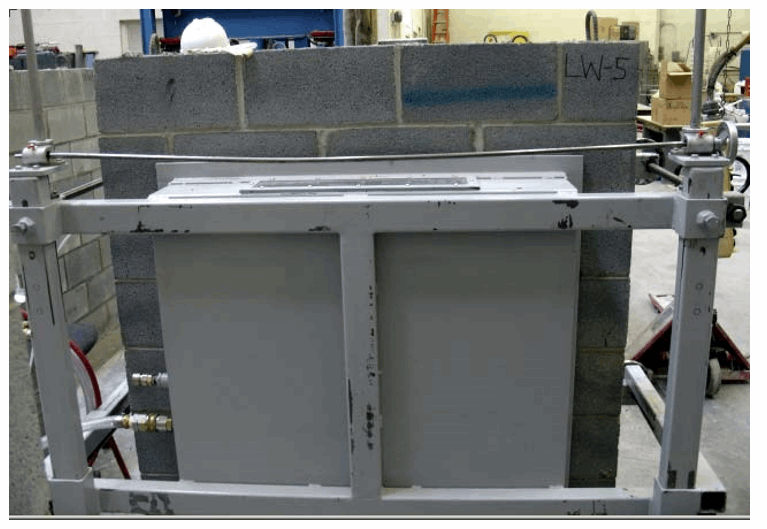David T. Biggs1 and Nicholas R. Lang2
- 1Principal Consultant, Ryan-Biggs Associates, P.C., 291 River Street, Troy, New York 12180, USA, dbiggs@ryanbiggs.com
- 2 Manager, Research and Development Laboratory, National Concrete Masonry Association, 13750 Sunrise Valley Drive, Herndon, Virginia, 20171, USA, nlang@ncma.org
ABSTRACT
Air infiltration has been identified as a major contributor to energy loss in buildings. Infiltration is a result of leaks around doors and windows, through cracks and holes, in heating and cooling systems and fireplaces, from vents, and diffusion through walls and roofs. Energy recommendations in the United States and Canada also include the use of air barriers on exterior walls to restrict diffusion.
To assess wall diffusion, ASTM E 2178-01, Standard Test Method for Air Barrier Materials [1] was developed. However, it primarily tests air permeance of non-porous materials. Being a porous material, concrete masonry has its own particular challenges to rate its air permeance. In a research project conducted for the National Concrete Masonry Association [2], fifteen wall assemblies were constructed from three different sets of concrete masonry units and tested for resistance to air leakage under defined pressures. The contribution of mortar joints to the air permeance was also evaluated.
This paper will describe a portion of the research, discuss a modified testing program for singlewythe concrete masonry, and present the results obtained to evaluate the air permeance of test walls constructed of concrete masonry units meeting ASTM C 90 and masonry mortar meeting ASTM C 270, Type S.
KEYWORDS: infiltration, air barrier, concrete masonry units, mortar, energy.
B5-1



